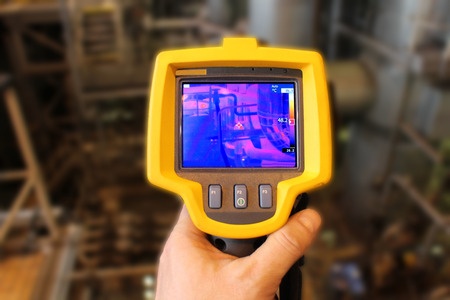 Over a period of years, industrial electrical and mechanical systems can experience wear and tear that may cause them to pose a fire or electrocution risk. Unlike residential systems, industrial outfits carry higher electrical loads, often around the clock. In the past, infrared imaging was used to determine whether a system or piece of equipment had become damaged. While infrared cameras were useful, they were sometimes difficult to use. In contrast, thermal imaging allows an electrician to assess a system or a piece of equipment, even when it is under load.
Over a period of years, industrial electrical and mechanical systems can experience wear and tear that may cause them to pose a fire or electrocution risk. Unlike residential systems, industrial outfits carry higher electrical loads, often around the clock. In the past, infrared imaging was used to determine whether a system or piece of equipment had become damaged. While infrared cameras were useful, they were sometimes difficult to use. In contrast, thermal imaging allows an electrician to assess a system or a piece of equipment, even when it is under load.
What is Thermal Imaging?
All electrical equipment gives off electromagnetic radiation. As electromagnetic radiation intensity rises, the energy it generates gives off heat. Thermal imaging involves using a thermal imaging camera to take the infrared energy given off and transfer it into a camera for processing. The image on the screen of the camera reflects the intensity of the radiation and shows it in terms of heat.
When your electrical systems and equipment are operating, they constantly produce heat. Most of the time, this is okay. However, once the electrical system begins to wear down, it can overheat. Usually overheating occurs in specific areas where the wear has begun to show, and this is what the thermal camera identifies.
What are the Advantages Over Infrared Imaging?
Although infrared imaging is perfectly accurate, it can cost more time and money. Infrared cameras can only read small areas at a time. While this makes them useful for small spot readings, the monitoring process becomes lengthy and frustrating when you begin to look at large areas. In addition, when you use a handheld scanner, there is a chance your hand might miss a key area. Compared to infrared cameras, thermal devices can look at large areas. Depending on the size of the device you use, this can help you assess an entire electrical component at once, which in turn increases accuracy even when you factor in human error.
Once the infrared image is on the screen, you can begin to map where the problems are. Saving a snapshot of the image on the screen saves time, and allows an electrician to assess the problem faster. You can store the images for future reference, and identify exactly which area needs to be fixed immediately. In the long-term, this saves you time and money.
Why Use Thermal Imaging at All?
Anybody who is at the helm of an industrial operation will already know that wasting time means throwing away money. If you do not see an electrical problem sneaking up on you, you can see your usual operations halt for days or more. Regular inspections with thermal imaging reduces the risk of challenging problems forcing you to halt the use of your systems or equipment. Consider thermal imaging to be like any other maintenance tool to keep your business running.
There are safety aspects to consider when using an electrician who employs the use of thermal imaging too. The faster you detect an electrical problem, the smaller the risk of a fire breaking out. In addition, you do not have to worry about electrocution as a result of system oxidation, overheating connections, insulator defects, or insecure connections.
Thermal imaging cameras are complex devices, so hiring an electrician who is skilled in using one is a must. With the right device to hand, a great electrician can detect small electrical problems during a routine inspection, and resolve them before your system suffers major damage.